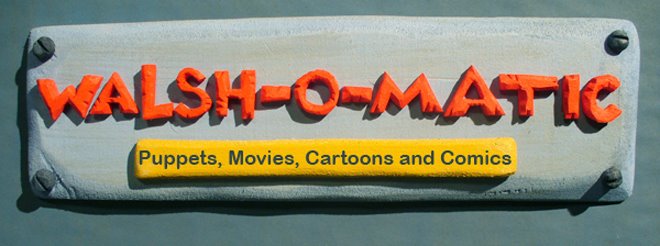
There's really no one way to define a puppet, nor how it can be used in puppet animation.
You can use very carefully designed and crafted puppets that are super slick (and super expensive), as was the case with The Corpse Bride (for example).
Or you can go in the complete opposite direction, and use pre-fabricated toys that are completely incapable of articulation but, with effort, can still get you wonderful results. And that's the direction Cowboy, Indian, and Horse goes for, big time. I've only linked to one episode on Atom Films site, but there are many more there to enjoy beyond this one.
As the potentially politically incorrect title suggests this show, on its surface, doesn't seem to really care too much about anything. On first glance it's mindless, silly, poorly crafted, and feels as though it was whipped off by 6th graders. That first impression is completely calculated and intentional, of course.
Upon re-viewing, (as it's hard to watch any episode just once because of how much fun they are), there is clearly heaps of attention paid to the project, especially in the realm of timing.
What do you focus on, as an animator, if your puppet is a moulded piece of plastic that is completely incapable of moving any body parts? You focus on timing. Anything that can be animated can be timed for an effective performance. And this show proves it.
The pleasure of watching this show also proves that puppets don't have to cost thousands of dollars or required crews of 20 people to fabricate them. If you don't have talented people animating those puppets, it won't matter how much money and technical wizardry you used to create them, the performances will still be bland and/or lifeless and/or unconvincing.
The puppets in Cowboy, Indian, and Horse prove that careful animation efforts (even if those efforts are to create "bad" animation for the purpose of getting laughs) can make the most unrealistic of puppets "live" as characters. If you know what you are doing as an animator, and have a clear intent and the skill to realize it on the screen, anything can be brought to life and given character.
This show is shot in Belgium (those kooky Belgians, it all started with their waffles), but is produced by Aardman. While giving a talk at the NFB theatre in Toronto recently, Helen Brunsdon (head of short film development at Aardman) told the audience that if a project feels like it could have come from within Aardman, it's worth backing even if it's produced elsewhere. Hats off to Aardman for having the guts to put out a show like Cowboy, Indian, and Horse while at the same time creating their ultra-polished feature film efforts.
Aardman has the maturity at its executive level to recognize that quality animation (and storytelling) has many different looks.
And it has the business savvy to capitalize on that same fact.

1 comment:
Great poost
Post a Comment